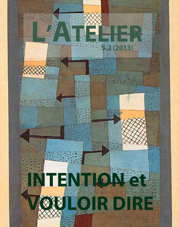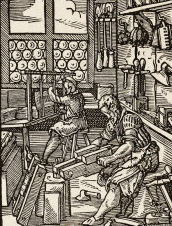"I Speak According to the Book": propaganda et vouloir-dire dans Nixon in China de John Adams et Alice Goodman
Résumé
Dans Nixon in China (1987), le compositeur John Adams et sa librettiste Alice Goodman tirent prétexte d'un épisode de l'histoire contemporaine pour se livrer à une imitation poussée du Détachement féminin rouge (1964), ballet de propagande que Jiang Qing, l'épouse de Mao Zedong, avait érigé en modèle à l'époque de la Révolution Culturelle. Ce geste ne peut s'interpréter de manière univoque comme un clin d'œil ironique à une esthétique discréditée car les objectifs poursuivis par Adams et Goodman s'apparentent étrangement à ceux des artistes chinois, eux aussi désireux de donner naissance à un nouveau style national conforme aux aspirations d'un vaste public. Plutôt qu'une volonté parodique, l'allusion au Détachement féminin rouge traduit une inquiétude face à l'aisance avec laquelle la culture populaire se met au service d'un vouloir-dire manipulateur, non parce que les propagandistes se montrent capables d'instrumentaliser l'art au nom de « basses » intentions idéologiques mais au contraire parce que les liens ambigus que le projet artistique entretient bon gré mal gré avec un vouloir-dire auctorial l'apparentent d'emblée, qu'on le veuille ou non, à une entreprise de manipulation. Dès lors, Nixon in China attribue au Détachement féminin rouge une fonction heuristique : si Adams et Goodman s'y réfèrent avec autant de précision, c'est afin de mettre en lumière le rôle paradoxal des intentions en art et de trouver, grâce à un retour réflexif, le moyen de s'accommoder des apories auxquelles les auteurs du ballet maoïste doivent à la fois leur réussite et leur échec.
In Nixon in China (1987), composer John Adams and writer Alice Goodman use a historical event as a pretext for offering a detailed imitation of The Red Detachment of Women (1964), a mainstay of Cultural Revolution propaganda and one of the “model works” championed by Mao's wife Jiang Qing. This cannot be interpreted solely as an ironic nod to the discredited aesthetics of Socialist realism, since the aims pursued by Adams and Goodman are strangely similar to those of Cultural Revolution artists — like their Chinese counterparts, they are interested in creating a new national style of music theater capable of satisfying the broadest possible audience. Thus, Nixon in China's pointed references to The Red Detachment of Women are not primarily parodic. Their main function is to express unease at the way popular culture can be used in the interest of propaganda, not so much because its agents are able to control art for “base” ideological purposes as because art itself is essentially akin to a form of manipulation due to its ambiguous reliance on authorial intentions. In the end, Nixon in China attributes a heuristic function to The Red Detachment of Women: the reason why Adams and Goodman give it so much importance is that it sheds light on the paradoxical role or artistic intentions, thereby helping the composer and his librettist come to terms with the aporias to which the Chinese ballet owes both its success and its failure.
-
L’envoi spontané d’un article à la rédaction de L’Atelier implique l’autorisation de publication et la cession des droits dans les limites établies par la loi de propriété intellectuelle.
-
L’Atelier conserve les droits de reproduction des articles publiés, quelque soit le support : internet, CD ROM, réimpression, photocopie, etc.
-
L’auteur conserve le droit de publier ultérieurement son article déjà paru dans L’Atelier avec la seule obligation de mentionner le nom de la revue comme source de la première publication.





